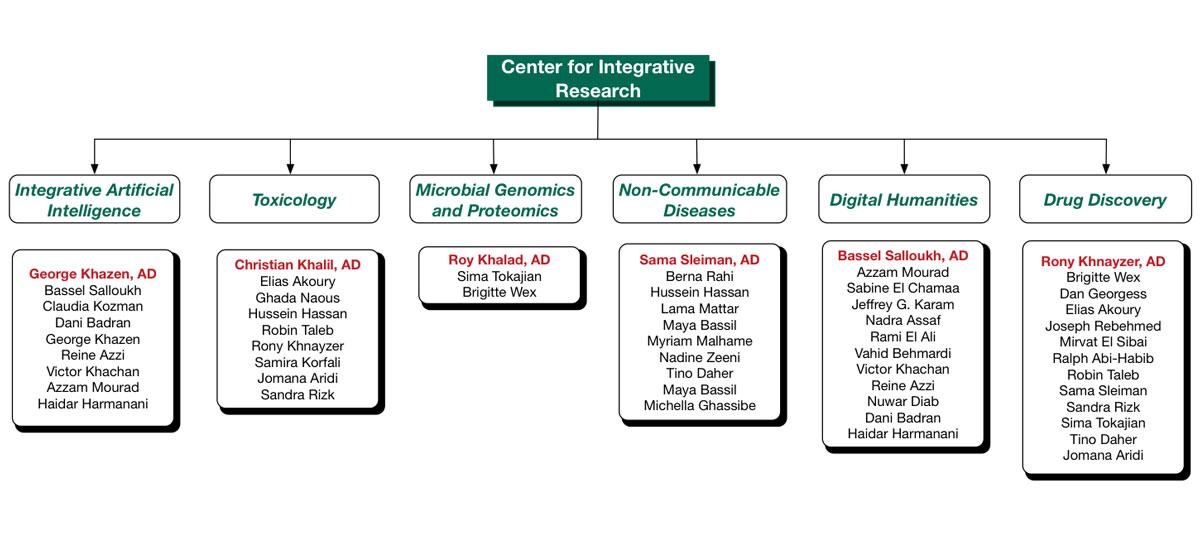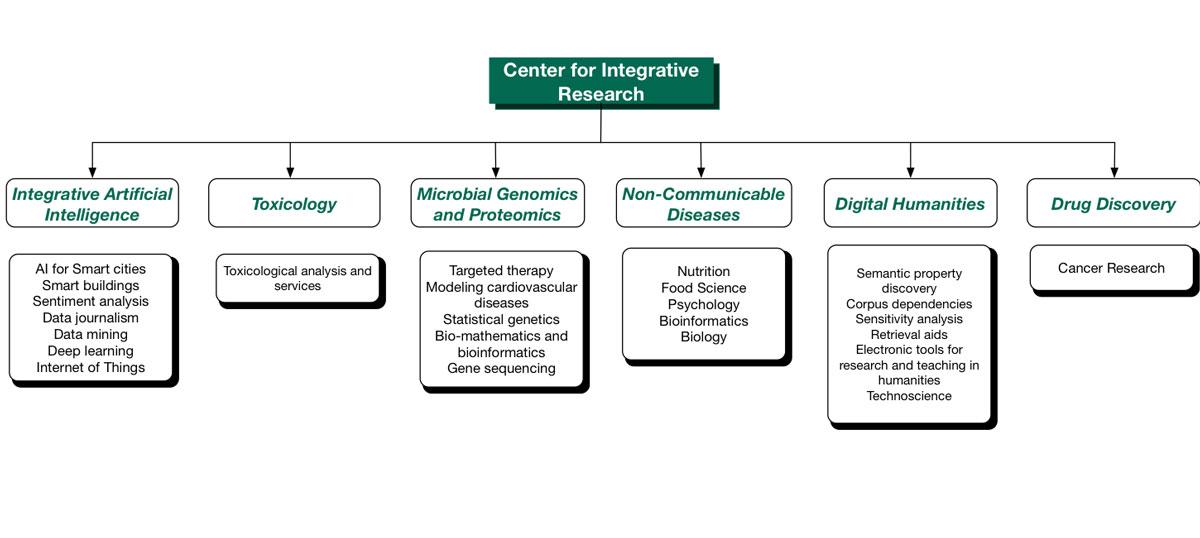Center for Integrative Research (CIR)
Mission
The mission of the Center for Integrative Research is to establish connections within and between art and science disciplines by examining complex current issues using multiple disciplinary perspectives.
Purpose
The School of Arts and Sciences is one of the most diverse schools in the University with programs ranging from performing arts and journalism to biological sciences and computing.
The Center for Integrative Research is driven by the University’s strategic plan as well as by the need to federate researchers in arts and sciences disciplines by establishing a collaborative platform. The center also aims to establish technology transfer culture in the School and to affirm the School’s commitment for high-quality programs and research.
The center:
- Promotes and facilitates collaborative research and networking by supporting synergies between research, teaching, and learning in various arts and sciences fields;
- Increases and efficiently manage the research resources in the School;
- Provides education and training in related fields to students;
- Transfers technology and knowledge via a variety of appropriate mechanisms;
- Provides services to the local community including industry and governmental agencies.
The CIR seeks to enhance research at the School of Arts and Sciences by providing students and faculty with the opportunity to perform innovative and cutting-edge research in a myriad of areas including digital humanities, biomedical, genetic, and earth sciences.
Finally, the CIR aims to install artificial intelligence at the heart of realizing the transformation towards value-based services including journalism, biological sciences, medicine, and healthcare.
Units
The CIR is composed of various multi-disciplinary units that aim to conduct research around a specific theme or topic. Units are expected to have good external funding in addition to an active research training program. The units strive to service the community through outreach and training activities. Currently, the center is composed of the following units (Figure 1):
- Digital Humanities;
- Drug Discovery;
- Integrative Artificial Intelligence;
- Microbial Genomics;
- Non-Communicable Diseases;
- Toxicology.
The CIR units engage full-time faculty, undergraduate and graduate students, and post-doctoral fellows. They have autonomous operations and are led by the associate directors. The associate director is elected by full-time faculty in the units for a three-year term. Faculty maybe active in one or more units.
The associate director:
- Leads the unit by developing and implementing the unit’s research strategy and aligning the strategy with School’s and University’s strategy;
- Develops annual research performance indicators and targets for the unit;
- Promotes the development of a research environment within the unit;
- Organizes tentative annual agendas that include seminars, training, and monthly research meetings;
- Facilitates the submission of research proposals to granting agencies on behalf of the unit by ensuring compliance with relevant University policy and ethical practice;
- Mentors new faculty and students;
- Develops the profile of the unit through representation, engagement, linkage with professional, industry and community groups relevant to the units’ activities;
- Submits an annual report to the director regarding the unit’s activities.
A performance review of the activities of the unit occurs on a yearly basis to ensure that the unit is active and fiscally responsible. The associate director submits a comprehensive report detailing the unit’s activity and resulting publications and/or funding. The report should include the following:
- Major achievements including:
- Accomplished research;
- New partnerships including industrial partnerships;
- Major awards received and/or fostered by the unit;
- Major publications or conference papers by faculty and students in the unit;
- Technology-transfer information such as patents;
- Public service and outreach and contribution at the national and the international level;
- Contribution to fostering collaborative research at SoAS;
- Associate director effectiveness including leadership, accomplishments, and future goals.
 Scope
Scope
The Center for Integrative Research will be involved in the following areas (Figure 2):
- Smart Cities including:
- Artificial Intelligence for commercial real estate;
- Artificial Intelligence for co-Working space;
- Parking space optimization using IoT and analytics;
- Smart buildings.
- DNA sequencing and next-generation sequencing;
- Toxicological analysis and services;
- Drug discovery noting that SAS has so far made great strides in various areas of drug discovery and is looking into patenting some of the results in cancer research;
- Data mining, data processing, modeling, gene sequencing, modeling cardiovascular diseases, statistical genetics, bio-mathematics and bioinformatics;
- Digital humanities;
- Sentiment analysis;
- Feature embeddings including generation, semantic property discovery, corpus dependencies, sensitivity analysis, retrieval aids;
- Data journalism;
- Artificial intelligence in education;
- Artificial intelligence in Politics.
